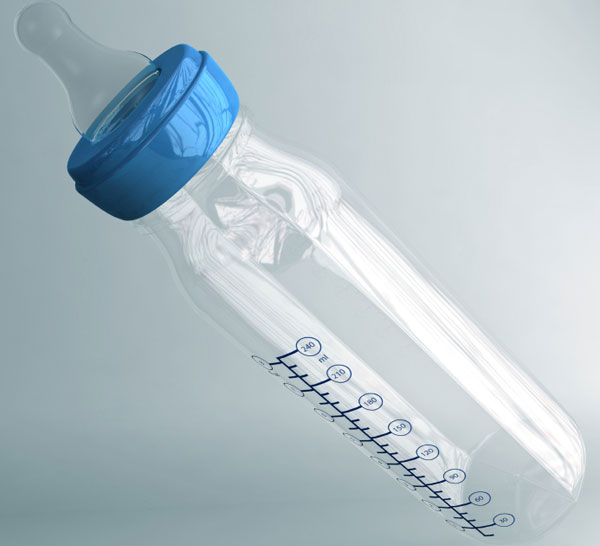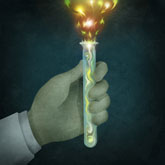Senate Passes Plastic Chemical Ban
In 2005, a group of toxicologists published a study suggesting that mothers whose urine contained high levels of an important component of plastics were
Jul 31, 20203.4K Shares344.8K Views
In 2005, a group of toxicologists published a studysuggesting that mothers whose urine contained high levels of an important component of plastics were more likely to have male babies with subtly feminized genitals. This, the first research showing human effects from a group of chemicals known as phthalates, infuriated the plastics industry, stirred an active controversy among toxicologists and kick-started U.S. legislators into taking steps to ban the substance.
Illustration by: Matt Mahurin
On Thursday, with at least eight states contemplating a phthalate ban similar to one California passed last year, the U.S. Senate, while overhauling the Consumer Products Safety Commission, included an amendment to ban phthalates from all children’s toys and products. Hundreds of thousands of tons of phthalates are produced each year and put in plastics used for everything from shower curtains to baby bottle nipples, to make them soft and pliable.
If the amendment, added by Sen. Diane Feinstein (D-Calif.), survives conference committee and is signed by President George W. Bush, Americans will have the same protection that citizens of the European Union have had since 1999, when the EU parliament responded to studies that suggested phthalates might cause harm to baby boys. Since Europe banned the substances from toys, they’ve been joined by countries like China, Romania and Mexico–not usually regarded as ground breakers in public health. How is it that the United States, which used to set the gold standard for public health regulation, has fallen so far behind?
Research done in the 1990s showed that female rats fed phthalates gave birth to male pups with defective genitals. It was such a reproducible effect in the laboratory that scientists started calling it “phthalate syndrome.” Babies and toddlers suck on plastic toys all the time, so there was concern that ingesting too many phthalates could affect testosterone or other male hormones. Little data, until recently, showed human harm, however. So why did Europe act, while U.S. regulators stayed mum?
The answer, as investigative reporter Mark Schapiro ably points out in his new book Exposed, is that Europe has embraced the “precautionary principle,” the idea that when evidence of harm reaches a certain threshold, it’s best to take action to protect people when there’s doubt about safety. In the United States, however, the operating principle is that we shouldn’t act without definitive evidence.
There’s a wide area of gray between precaution and inaction. But over the past 20 years, the U.S. government has installed a number of barriers to regulation. A combination of industry pressure and the intellectual tutelage of skeptical risk analysts like former Harvard professor John Graham, a top Office of Management and Budget official until 2007, has put the brakes on.
Whereas the Environmental Protection Agency, the Food and Drug Administration and other U.S. agencies led the way to cleaner and safer food, water, air and medicines through the early 1980s, EU regulators now hold the baton, Schapiro notes.
There are considerable ironies here. It was the EPA and the National Institutes of Health that funded research by Rochester University’s Shanna Swan and colleagues that first turned up a diminished “anogenital distance” in male infants with prenatal phthalate exposure. Another key alarm-bell ringer in phthalate research is L. Earl Gray, an EPA scientist. And the European Union based its ban largely on this U.S. government-funded research.
Then, when state legislators decided to take action to ban or control phthalates, they turned to the European Union for guidance. “The EU’s leadership on this issue has already led China to reevaluate what exposures they want for their citizens. Why wouldn’t we want to do the same thing?” asks State Sen. Virginia Lyons {D-Vt.), who is sponsoring legislation there to ban phthalates from toys, cribs and other items that kids chew on.
China now makes phthalate-free toys for Europe, Japan and many other countries — even for its own market. Yet some manufacturers continue to make phthalate-containing toys in China for shipment to the United States. “Why would we want to be the dumping ground for the leftovers?” asks Lyons. “It just doesn’t make sense.”
Some toxicologists contacted by The Washington Independent said they weren’t as worried about phthalates as scientists like Swan and Gray. Though an apparently safe replacement for phthalates is being used in the European Union, some scientists questioned whether the changeover was risk-free and worth the extra expense to U.S. manufacturers. In addition, they noted that even in infants, the most frequent exposure to phthalates comes through food and air, not toys.
“The public is harmed when lawmakers proscribe the use of a product that has been proved safe and useful,” Dr. Henry I. Miller, a former FDA regulator who is now a fellow at Stanford University’s conservative Hoover Institute, wrote in The Los Angeles Times recently. “Simply put, Feinstein’s bill represents bad science, bad law and disregard for the public interest.”
But this ball clearly has momentum. Already, manufacturers have removed the riskiest phthalates from milk bottle nipples and sucky-plugs that babies have in their mouths many hours at a time. Retailers like Toys “R” Us and Target have eliminated phthalates from baby-changing tables and toys voluntarily.
To stress the need for a law that would require removal of phthalates, Feinstein introduced her amendment in the Senate last Tuesday while holding up a photograph of her communications director’s 8-month-old son. The baby was sucking on a plastic book titled “Hello Bee, Hello Me.” Some time later, her staff took the book to a laboratory for testing.
It was loaded with phthalates.

Hajra Shannon
Reviewer
Latest Articles
Popular Articles

